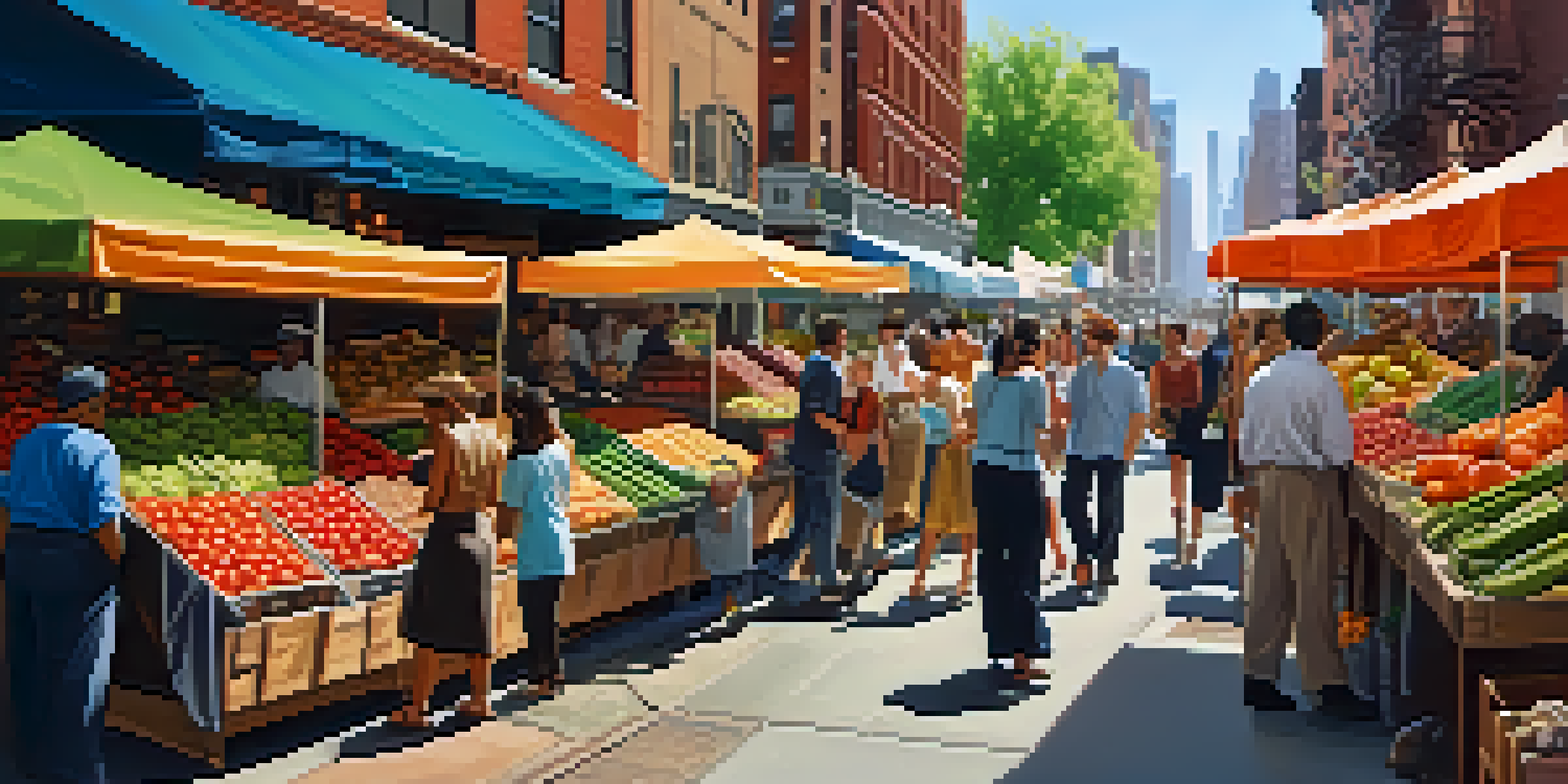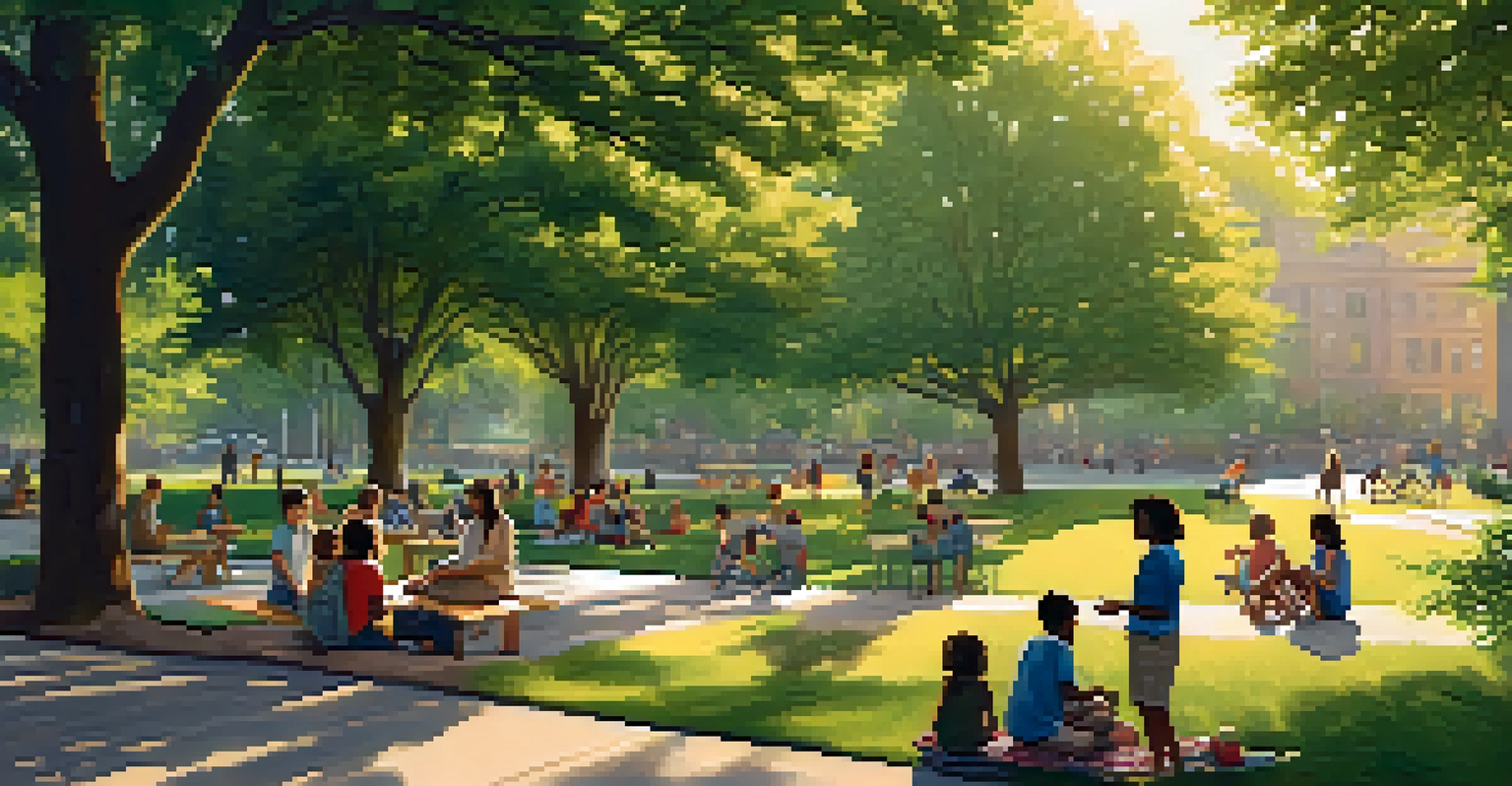The Role of Immigration Policies in Shaping NYC’s Demographics

Understanding NYC's Diverse Demographics Over Time
New York City has long been a melting pot of cultures, with its demographics constantly evolving. From the waves of Irish and Italian immigrants in the 19th century to the recent influx of people from Latin America and Asia, each group has left an indelible mark on the city's fabric. This rich tapestry of backgrounds has shaped not only the neighborhoods but also the economy and culture of NYC, making it a vibrant place to live.
New York is not a city, it's a world. It’s a place where people from different backgrounds come together to create something beautiful.
The city's demographic shifts can often be traced back to changes in immigration policies. For instance, the Immigration Act of 1965 opened the doors to a broader range of immigrants, leading to significant growth in the Asian and Hispanic populations. Understanding these historical contexts helps us see how policies affect the makeup of the city, influencing everything from local businesses to educational systems.
As we examine the role of immigration policies, it's essential to recognize the human stories behind the statistics. Each new wave of immigrants brings unique experiences and aspirations, contributing to NYC's identity. The interplay of policy and personal stories is what makes the city's demographics not just numbers, but a living, breathing community.
Key Immigration Policies Impacting NYC's Demographics
Several key immigration policies have significantly influenced the demographic landscape of New York City. The aforementioned Immigration Act of 1965 is a prime example, abolishing the national origins quota system and allowing more immigrants from non-European countries. This policy shift resulted in a diverse influx of people who have since become integral parts of NYC's neighborhoods and economy.

The Refugee Act of 1980 also played a crucial role, providing resettlement opportunities for those fleeing persecution. This policy brought many Southeast Asian refugees to the city, adding to its multicultural identity. Each policy not only changed who could enter the U.S. but also shaped the communities that developed in response to these new arrivals.
NYC's Demographics Are Ever-Changing
New York City's demographics have evolved through various immigration waves, significantly shaping its neighborhoods, economy, and culture.
In more recent years, policies like DACA (Deferred Action for Childhood Arrivals) have influenced younger generations of immigrants. By offering temporary relief from deportation, DACA allowed many young people to pursue education and careers in NYC, further enriching the city's demographic tapestry. These policies illustrate how legislation can promote or hinder the integration of immigrants into society.
The Economic Impact of Immigration on NYC
Immigrants have always been a driving force behind New York City's economy. They contribute to various sectors, from hospitality and construction to technology and healthcare. In fact, according to a report by the New American Economy, immigrants accounted for over 40% of the city's workforce in 2020, illustrating their indispensable role in keeping the economy thriving.
Immigrants are the backbone of our economy and the essence of our culture.
Moreover, immigrant-owned businesses contribute significantly to the local economy. Many neighborhoods, particularly in Queens and Brooklyn, are home to bustling immigrant-run enterprises, from restaurants to retail shops. These businesses not only create jobs but also foster community ties, providing services rooted in cultural understanding.
Additionally, immigrants often bring new ideas and innovations, enhancing NYC's reputation as a global hub. The blend of different perspectives can lead to creative solutions in business and the arts, showcasing how the diverse makeup of the city fuels its economic engine. Thus, immigration policies that encourage this diversity can have a profound impact on the economic vitality of NYC.
Cultural Contributions of Immigrants in NYC
The cultural landscape of New York City is undeniably shaped by its immigrant populations. From festivals celebrating different heritages to diverse culinary offerings, immigrants enrich the city's cultural scene. For example, the annual Lunar New Year Parade in Chinatown and the West Indian Day Parade in Brooklyn are testaments to the vibrant cultures that thrive in NYC.
Moreover, the arts scene has been significantly influenced by immigrants, who bring new perspectives and creativity. Artists, musicians, and performers from various backgrounds contribute to the city's dynamic cultural tapestry, leading to innovative art forms and genres. This fusion of ideas not only entertains but also educates residents and visitors about different cultures.
Immigrants Drive NYC's Economy
Immigrants play a crucial role in New York City's economy, making up over 40% of the workforce and contributing to diverse local businesses.
Cultural contributions extend beyond the arts; they also foster understanding and acceptance among diverse groups. By sharing their traditions and experiences, immigrants help bridge gaps between communities, promoting a sense of unity in diversity. This cultural exchange reflects the essence of what makes New York City truly unique.
Challenges Faced by Immigrant Communities in NYC
Despite the many contributions of immigrants to NYC, they often face significant challenges. One of the most pressing issues is access to affordable housing, which can be particularly difficult for new arrivals. Many immigrants settle in neighborhoods where housing costs are rising, leading to overcrowding and displacement, impacting their quality of life.
Additionally, language barriers can hinder access to essential services, including healthcare and education. While NYC offers resources for language assistance, navigating these systems can still be overwhelming for non-English speakers. This barrier not only affects their ability to thrive but also limits their participation in the community.
Moreover, immigrants frequently encounter discrimination, which can further complicate their integration into society. Whether it's in the workplace or community interactions, biases can create an unwelcoming environment. Addressing these challenges is crucial for fostering a more inclusive city that values the contributions of all its residents.
The Importance of Inclusive Immigration Policies
Inclusive immigration policies are vital for ensuring that New York City remains a thriving, diverse metropolis. By creating pathways for immigrants to enter and settle in the city, policies can help sustain the economic and cultural vibrancy that defines NYC. These policies not only benefit newcomers but also enhance the overall quality of life for all residents.
Furthermore, inclusive policies promote social cohesion by encouraging integration and community building. When immigrants feel welcomed and supported, they are more likely to engage with their neighborhoods and contribute positively. This engagement fosters a sense of belonging that is essential for a healthy, thriving city.
Challenges Persist for Immigrants
Despite their contributions, immigrant communities in NYC face challenges such as affordable housing, language barriers, and discrimination.
Lastly, inclusive immigration policies can help combat the misinformation and fear often surrounding immigration. By highlighting the positive impacts of immigrants and their contributions to society, we can foster a more informed public discourse. This understanding is crucial for maintaining the diverse and dynamic character of New York City.
Looking Ahead: The Future of Immigration in NYC
As we look to the future, the role of immigration in shaping New York City's demographics is likely to continue evolving. Global events, economic conditions, and changes in immigration legislation will all play a part in influencing who comes to the city and how they integrate. This dynamic landscape means that policymakers, community leaders, and residents must remain adaptable and open to change.
Emerging trends, such as remote work and climate migration, may also reshape the demographics of NYC. With the rise of remote work, some may choose to relocate to the city, while others might seek more affordable living options elsewhere. Additionally, climate change is prompting individuals from vulnerable areas to seek refuge in safer locations, including urban centers like NYC.

Ultimately, the future of immigration in New York City presents both opportunities and challenges. By embracing diversity and fostering an inclusive environment, the city can continue to thrive as a beacon of hope and opportunity, ensuring that it remains a unique and vibrant place for generations to come.